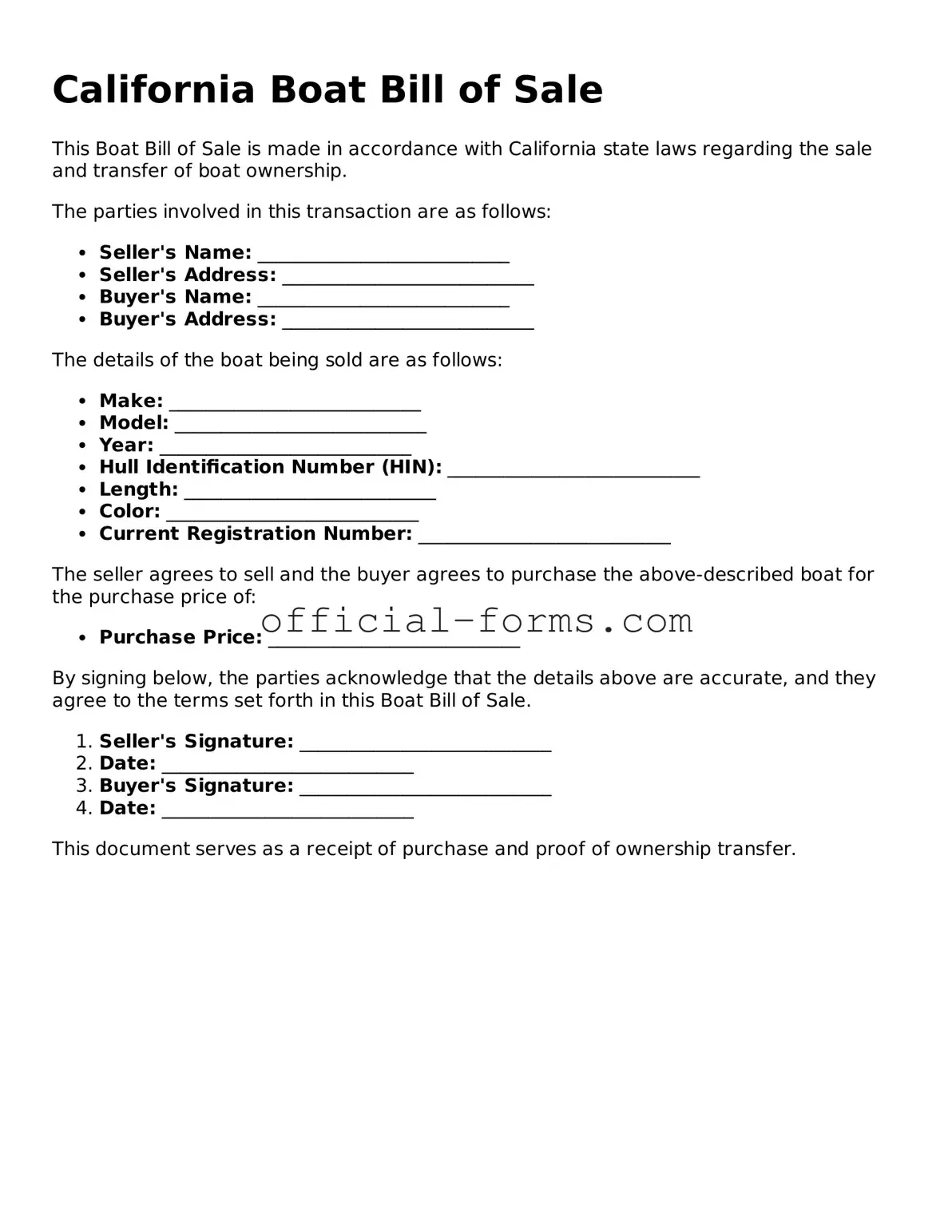Completing the California Boat Bill of Sale form accurately is crucial for both the buyer and seller. However, many individuals make common mistakes that can lead to complications. One frequent error is failing to provide complete information. Buyers and sellers must ensure that all required fields, such as names, addresses, and vessel details, are filled out completely. Omitting even a small piece of information can cause delays in the transfer of ownership.
Another common mistake is not signing the document. Both parties must sign the bill of sale to validate the transaction. Without signatures, the form lacks legal standing, which can create issues if disputes arise later. It is essential to double-check that both parties have signed the document before finalizing the sale.
Some individuals neglect to include the correct date on the form. This detail is vital, as it establishes when the transaction took place. If the date is incorrect or missing, it can lead to confusion regarding ownership and liability. Always ensure that the date reflects the actual transaction date.
Another mistake involves using incorrect vessel identification numbers. The boat's hull identification number (HIN) must be accurately recorded. If this number is wrong or does not match the vessel, it can create complications with registration and insurance. It is advisable to verify the HIN before completing the form.
People often overlook the importance of notarization. While notarization is not always required for a boat bill of sale in California, having the document notarized can provide an additional layer of protection. It serves as proof that both parties willingly entered into the agreement, which can be beneficial if disputes arise in the future.
Another mistake is failing to keep copies of the completed bill of sale. Both the buyer and seller should retain copies for their records. This documentation can be crucial for future reference, especially when dealing with registration or any legal matters that may arise.
Many individuals also forget to include payment details in the bill of sale. Clearly stating the amount paid for the vessel and the method of payment can help prevent misunderstandings later on. It is important to document this information to provide clarity for both parties.
Lastly, some people make the mistake of not researching local regulations regarding boat sales. Different counties may have specific requirements for boat sales and transfers. Familiarizing oneself with these regulations can help ensure compliance and a smooth transaction process.
